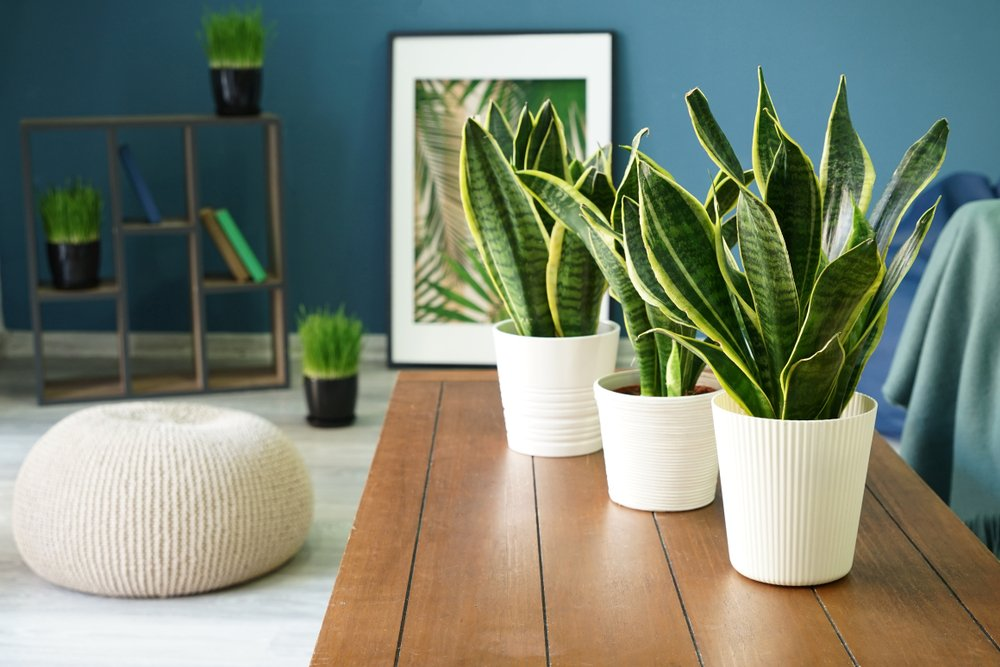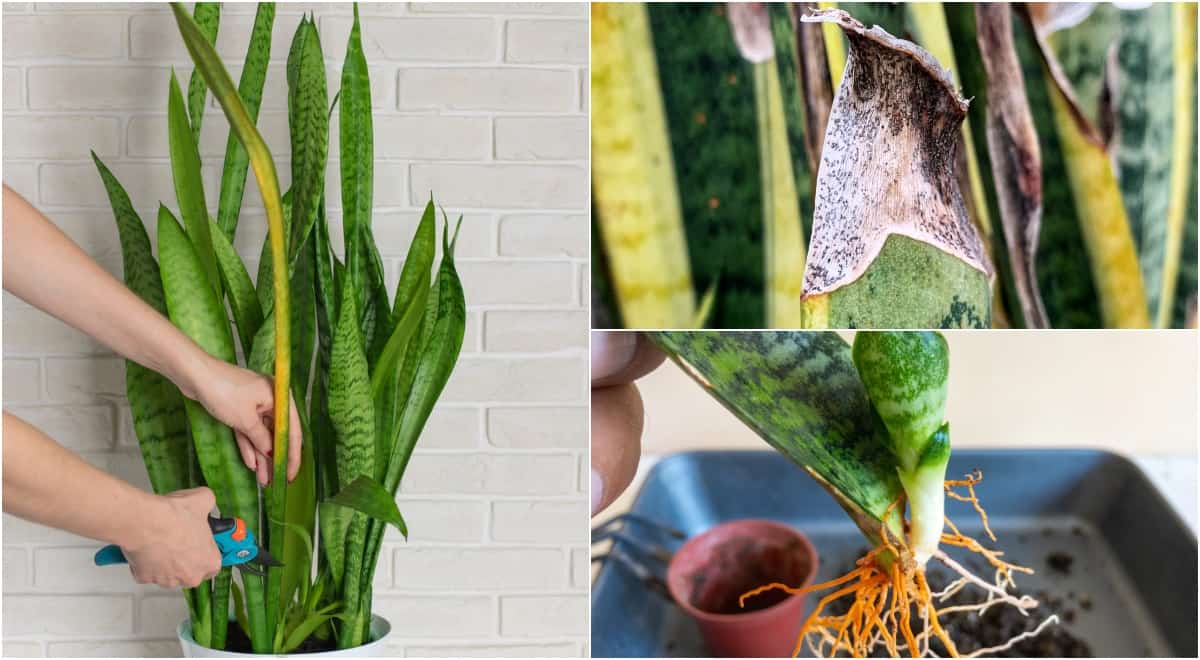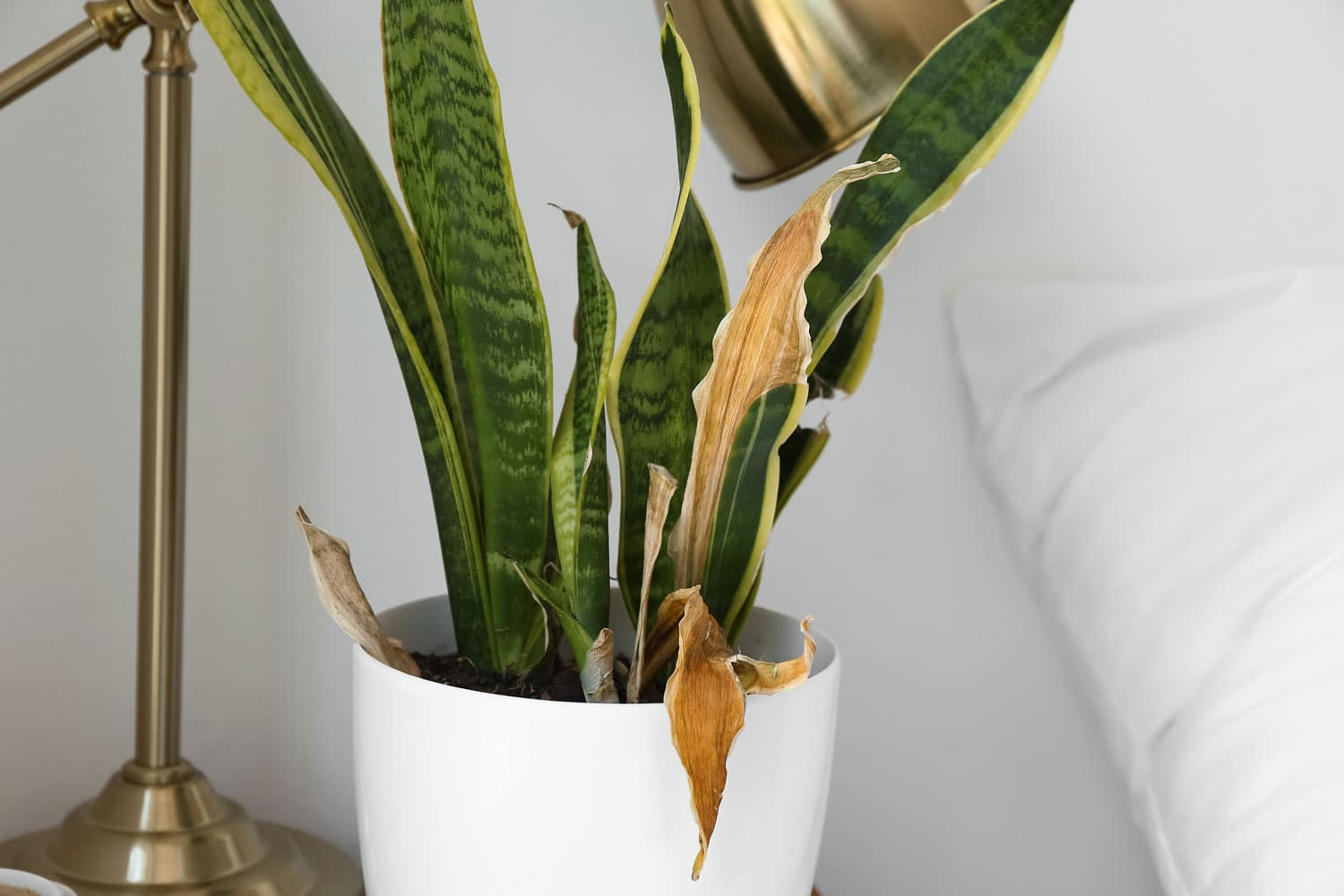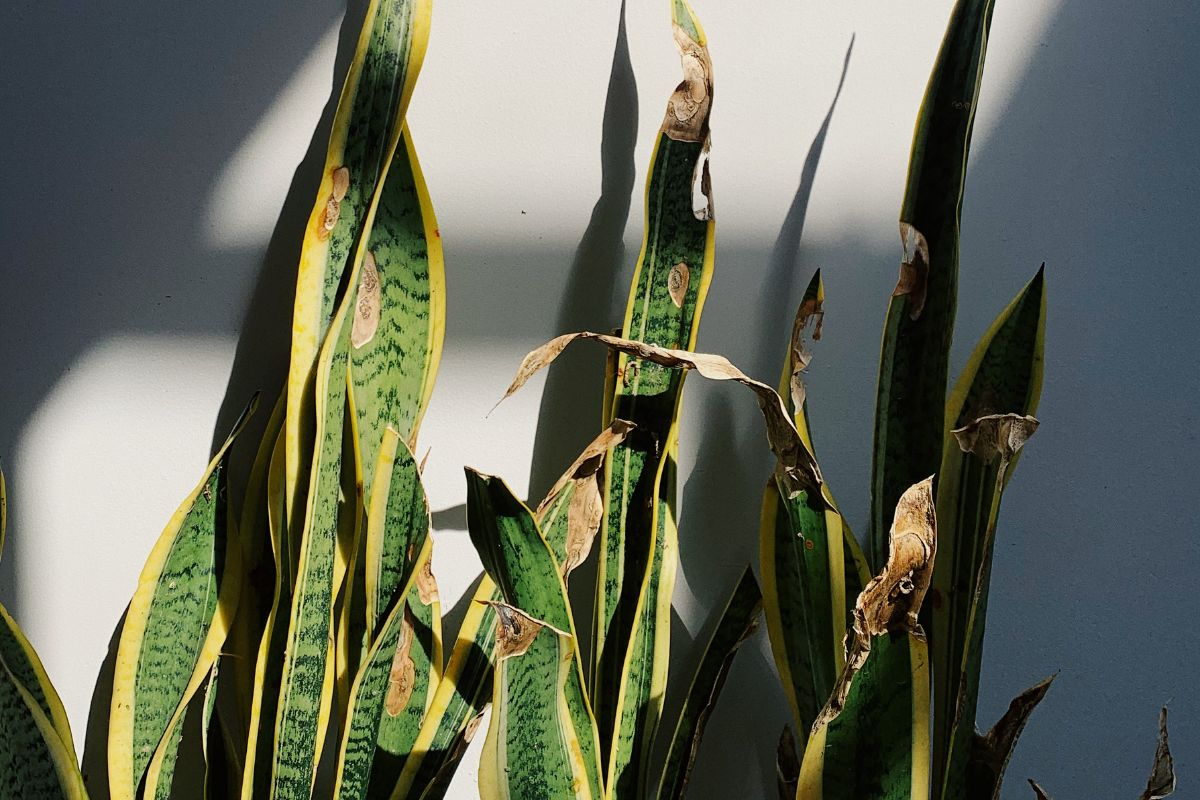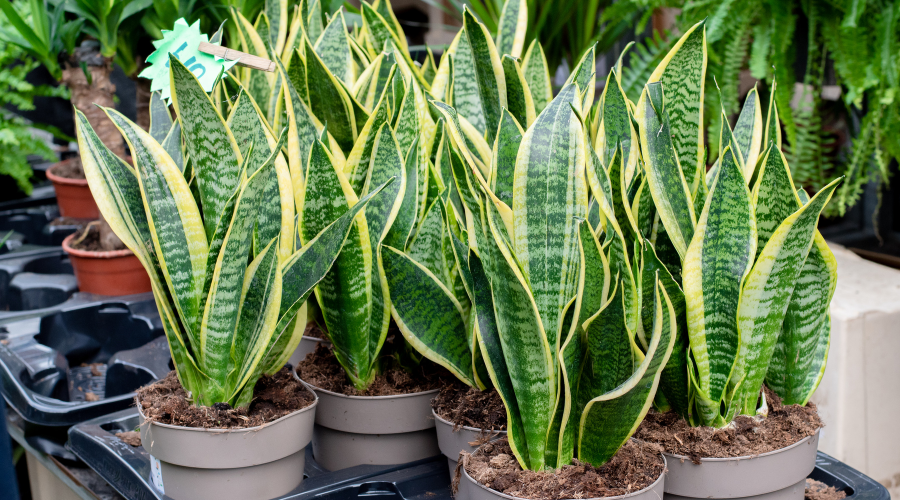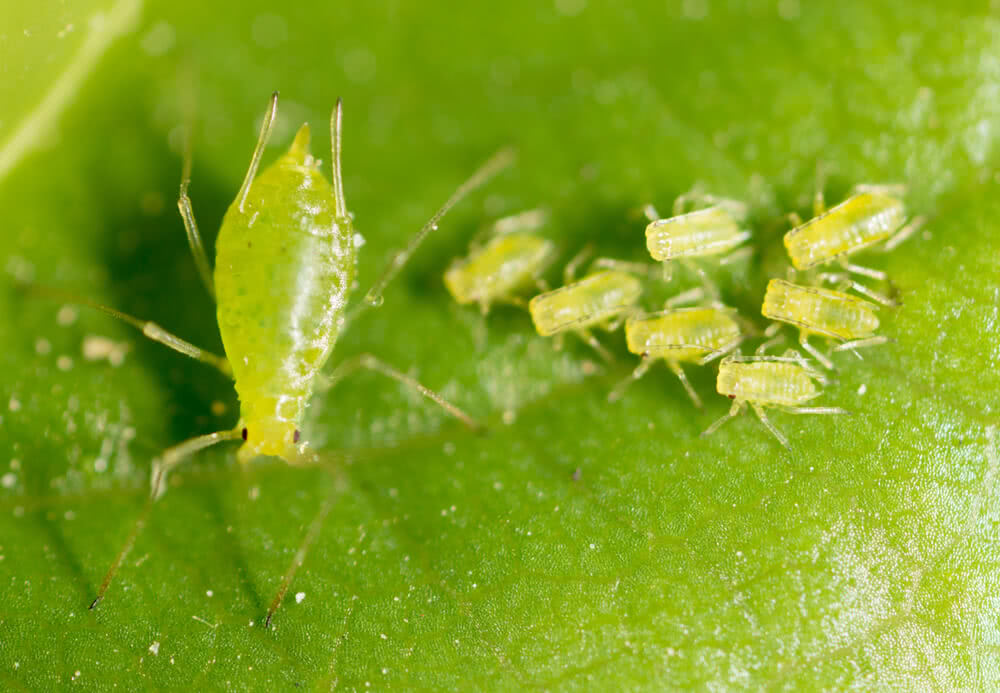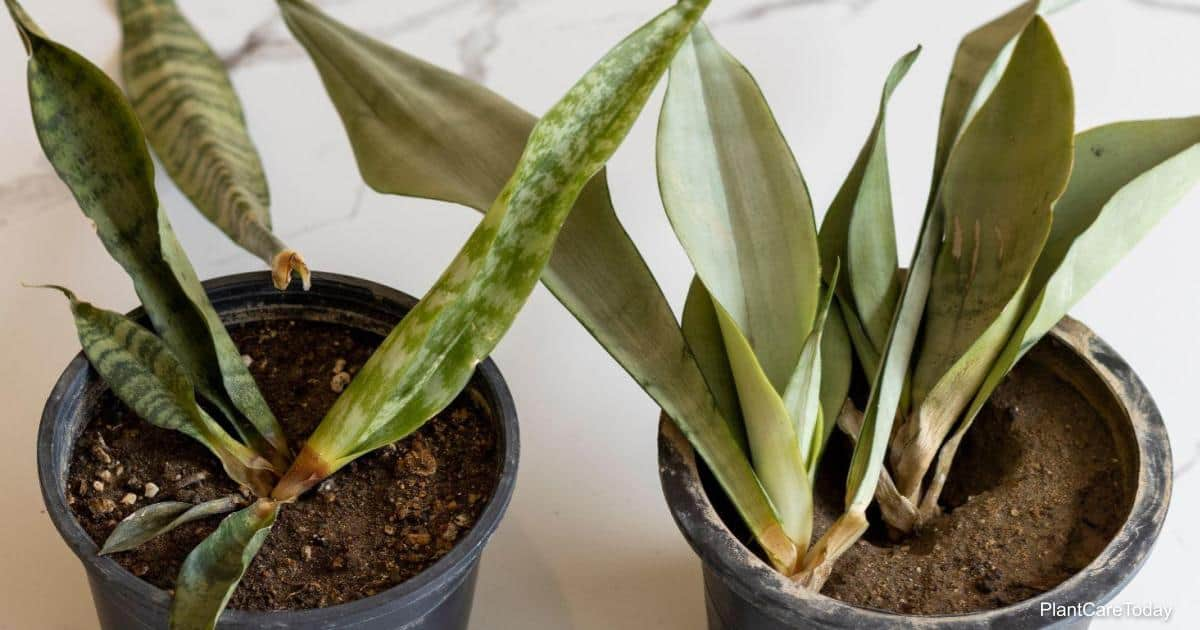HousePlantJoy is supported by our audience. When you purchase through one of our links, we may earn a small affiliate commission. As an Amazon Associate I earn from qualifying purchases. Your cost is not affected.
==================
Have you noticed your snake plant, with yellow or mushy leaves, looking sad lately? It happens to the best of us. Despite their tough-as-nails image and air-cleaning skills, snake plants can run into trouble. From my journey with these plants, I’ve learned they’re less maintenance-free than you might think. They can get sick, too.
Let’s get straight to the point about what goes wrong with these plants and how to make them happy again. Through my ups and downs with snake plants, I’ve picked up a few tricks to keep them healthy. Stick around, and I’ll share what I’ve learned about bringing these plants back from the brink.
The Complete Guide to Recognizing and Treating Snake Plant Sickness
Photo by: Aumanns Nursery
My snake plants, also known as mother-in-law’s tongues (Dracaena trifasciata, formerly Sansevieria trifasciata), have been through it all. These tough plants are usually a breeze, thriving in various conditions with striking, upright leaves. They’re champions at purifying the air and can handle low light like pros. But even these hardy plants have their off days. I’ve seen firsthand what can knock them down and, more importantly, how to pick them back up.
In my time growing snake plants, I’ve dealt with yellow leaves, brown tips, and the dreaded root rot. I’ve watched vibrant plants turn dull, their leaves drooping, spotting with brown, and curling at the edges. It’s disheartening, but I’ve learned that understanding these signs is the first step to recovery.
I’ve also tackled the environmental challenges of keeping snake plants happy, like finding the perfect balance of light and managing the right temperature. And pests? I’ve gone toe-to-toe with those, too.
This guide is a compilation of my experiences, the common problems I’ve faced, and the solutions that worked. From spotting the signs of distress to addressing issues head-on, I’m here to share what I’ve learned about keeping snake plants surviving and thriving.
Key Takeaways
- Common Issues: Overwatering, poor drainage, and environmental stress can lead to problems like yellowing leaves, brown tips, and root rot. Excessive watering is the primary reason for root rot. Make sure to use soil that drains well and water in moderation.
- Symptoms to Watch: Signs of an unhealthy Dracaena trifasciatai nclude drooping, yellowing, brown spots, curling leaves, mushiness, stunted growth, pests, and foul smell from the soil.
- Pests: Be vigilant against spider mites, mealybugs, scale insects, fungus gnats, thrips, and aphids.
- Prevention and Treatment: Avoid overwatering, provide adequate light, and use fungicides for diseases. If pests become a problem, consider using neem oil or insecticidal soap to address them.
- Care Practices: Ensure proper watering, light exposure, and use well-draining soil. Repot when necessary.
Identifying Common Problems in Snake Plants
Photo by: Blooming Backyard
Like any other houseplant, Snake plants can encounter common problems that can affect their health and appearance. Some common problems in snake plants include yellow leaves, brown tips, and root rot.
Identifying these common snake plants leaves problem early on and taking appropriate measures can help prevent further damage and maintain the health of your snake plants.
The Telltale Signs of an Unhappy Snake Plant
Photo by: GardenTabs.com
- Drooping Leaves: Often a sign of overwatering or root rot.
- Yellowing Leaves: Yellowing leaves may suggest overwatering, inadequate drainage, or nutrient deficiencies.
- Brown Tips or Spots: This may be caused by underwatering, excessive sunlight, or burns from chemicals in water.
- Curling Leaves: Often a symptom of underwatering or low humidity.
- Soft, Mushy Stems or Leaves: A clear indication of overwatering and possible root rot.
- Leaves Falling Over: This can result from overwatering or underwatering, depending on other conditions.
- Stunted Growth: This might indicate poor lighting, nutrient deficiency, or root-bound conditions.
- Wrinkled Leaves: Underwatering can affect snake plants which can caused wrinkled leaves
- Pests Visible on the Plant: These include spider mites, mealybugs, or fungus gnats, indicating an infestation.
- Foul Smell from Soil: Suggests root rot due to overwatering or poor drainage.
- Spots or Patches of Mold: On the soil surface or leaves, indicating too much moisture and poor air circulation.
Deciphering Leaf Discoloration: Yellow, Brown, and Beyond
Photo by: Harper’s Nurseries
Leaf discoloration in snake plants can be a cause for concern and can indicate various problems. Understanding the different types of leaf discoloration and their underlying causes can help you address the issue effectively.
- Yellow Leaves: Yellowing leaves may result from overwatering, underwatering, nutrient deficiencies, or inadequate lighting. Adjusting the watering routine, providing the right light, or fertilizing the plant can help address this issue.
- Brown Spots: Brown spots on Dracaena trifasciata leaves can indicate overwatering, underwatering, or fungal infections. Adjusting the watering routine and treating the plant with fungicide can help resolve this issue.
- Curling: Curling snake plant leaves can respond to environmental stress, such as too much or too little light, improper watering, or pest infestation. Recognizing and resolving the root cause can help revitalize the plant’s well-being.
By carefully observing leaf discoloration and pinpointing the root cause, you can implement suitable measures to rectify the problem and safeguard the health of your Dracaena trifasciata.
Root Issues That Compromise Snake Plant Health
Photo by: bestfloristreview
The root causes of compromised health in snake plants often stem from factors that disrupt their basic care requirements. Here are a few crucial concerns to keep an eye on:
Overwatering
This is the most common problem. Snake plants prefer dry conditions, and overwatering can lead to root rot, which is the decay of the plant’s roots due to excessive moisture. Symptoms include mushy, discolored leaves and a rotten smell from the soil.
Underwatering
While snake plants can tolerate drought, prolonged neglect can stress the plant, leading to dry, curling leaves and stunted growth.
Poor Lighting Conditions
Snake plants can adjust to different light environments but flourish most in indirect sunlight. Too much sunlight could scorch the leaves, and if there isn’t enough light, the plant might stretch towards the light and end up with weak foliage.
Temperature Stress
Extreme temperatures can harm snake plants. They prefer a moderate to warm climate and can be stressed by temperatures below 50°F (10°C) or sudden temperature fluctuations.
Pest Infestations
Although relatively resistant to pests, snake plants can still be attacked by spider mites, mealybugs, and fungus gnats. These pests can weaken the plant by feeding on its sap or damaging its roots.
Soil Conditions
Poorly draining soil can contribute to waterlogging and root rot. Choose a well draining soil suitable for snake plants.
Nutrient Deficiencies or Excesses
While snake plants don’t require too much fertilizer, an imbalance in essential nutrients can lead to poor growth and discolored leaves.
Physical Damage
Mechanical damage from repotting, moving, or pets can cause breaks in the leaves or stems, making the plant more susceptible to disease.
Poor Quality Water
Water with high salt content or chlorine can affect the plant’s health. Using filtered or rainwater is best if tap water quality is poor.
Environmental Factors Affecting Snake Plant Vitality
Photo by: Flora
Light Requirements: Finding the Sweet Spot
For optimal growth, snake plants require a balanced light environment. They thrive in bright, indirect light but can withstand low-light conditions. To prevent leaf scorching, it’s advisable to steer clear of direct sunlight. Positioning them in an area with adequate natural light is crucial. Indoors, they do well with indirect sunlight or artificial light. Excessive direct sunlight may result in brown spots on the leaves.
Temperature and Humidity: Creating an Ideal Environment
Monitor temperature and humidity levels closely to establish an optimal environment for your snake plant. Snake plants thrive in warm temperatures ranging between 70-90°F during the day and slightly cooler at night. Maintain a 40-50% humidity level to mimic their natural habitat.
Avoid placing them in drafty areas or near air-conditioning vents that can cause temperature fluctuations. Adequate humidity and stable temperatures will promote optimal growth and overall plant health, ensuring your plant thrives in its indoor space.
Common Snake Plant Problems: Pest Infestation
Photo by: Ugaoo
Pests and diseases threaten snake plants, hampering their growth and vitality. Early detection is crucial for effective treatment. Use remedies such as neem oil or insecticidal soap to combat infestations promptly.
Common Pests Invading Your Snake Plant
- Spider Mites: These small arachnids frequently manifest as minuscule red or brown dots on the leaves. They extract sap from the plant, resulting in discoloration and weakening of the foliage.
- Mealybugs: Mealybugs are tiny, soft-bodied insects coated in a white, waxy substance. They tend to cluster on leaves and stems, feeding on plant juices, leading to yellowing and wilting of the leaves.
- Scale Insects: Scale insects resemble small, flat, or round bumps on the plant’s surface. Their method of feeding involves sucking sap from the leaves, resulting in yellowing, stunted growth, and leaf drop.
- Fungus Gnats: These little flying insects are drawn to damp soil. Their larvae feed on the plant’s roots, causing damage and stunting growth.
- Thrips: Thrips are slender, tiny insects that feed on the plant’s leaves, causing silver or bronze streaks, distorted growth, and premature leaf drop.
- Aphids:Aphids are tiny, soft-bodied insects commonly found gathering on the undersides of leaves. They feed on plant sap, causing yellowing, curling, and distortion of leaves.
Regularly inspect your snake plant for signs of pest infestations, such as distorted leaves, discoloration, or the presence of insects. Treat infestations promptly using natural or chemical methods to prevent further damage and keep your snake plant healthy.
Here’s an additional video about identifying signs of illness in your snake plant.
By: The Girl with a Shovel
Proper Care Practices for a Thriving Snake Plant
Photo by: Plant Care Today
Watering Practices
- Make sure to let the soil dry out between waterings to steer clear of overwatering and root rot.
- Make sure to use soil that drains well and pots equipped with drainage holes
- Water is directly filtered into the soil, avoiding the leaves and preventing fungal diseases.
- Adjust the watering frequency based on season and temperature.
Lighting Requirements
- Offer bright, indirect light to promote optimal growth.
- Steer clear of direct sunlight, as it may cause leaf scorching.
- Ensure the plant isn’t subjected to extreme temperatures.
Maintenance and Pest Control
- Regularly dust the leaves to maintain plant health.
- Regularly inspect for pest indications and promptly deal with them to avoid infestations.
Soil and Repotting
- To avoid root rot, go for a soil mix that drains well.
- Repot every 2-3 years to refresh soil and accommodate root growth.
- Choose a slightly larger pot with fresh soil to support the plant’s health and growth.
Here are some additional video care tips for these plants
By: MonstroFarm
Enriching Your Space with a Flourishing Snake Plant
Caring for my snake plant has taught me the importance of understanding the common problems that can affect its health. From interpreting the causes of leaf discoloration to tackling root issues and environmental factors, taking a holistic approach to its care has been crucial.
By monitoring early signs of distress, such as the effects of overwatering or underwatering, and applying the correct solutions, I’ve ensured that my snake plant survives and thrives.
Ensuring it receives optimal light, temperature, and humidity while safeguarding it against pests and diseases has become part of my routine. My snake plant has flourished through adopting the right care practices and troubleshooting tips, adding a touch of beauty and vitality to my space.
Discover the secrets to nurturing your houseplants to thrive! Visit Houseplant Joy today for expert care advice and troubleshooting tips.
Frequently Asked Questions
Can an Overwatered Snake Plant Be Saved?
Yes, an overwatered snake plant can be saved. Remove the plant from soggy soil, trim rotting roots, and repot in well-draining soil. To prevent further problems, ensure the plant has time to dry out between watering sessions.
Is the Snake Plant Toxic?
Keep in mind that snake plants can be harmful to both pets and humans if eaten.
Why Does My Snake Plant's Soil Smell Bad?
Foul-smelling soil in these plants is often caused by overwatering, which leads to root rot and the growth of anaerobic bacteria.


